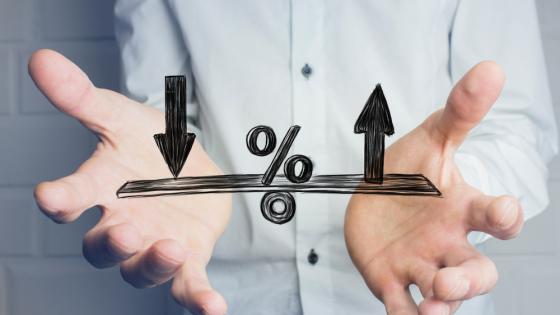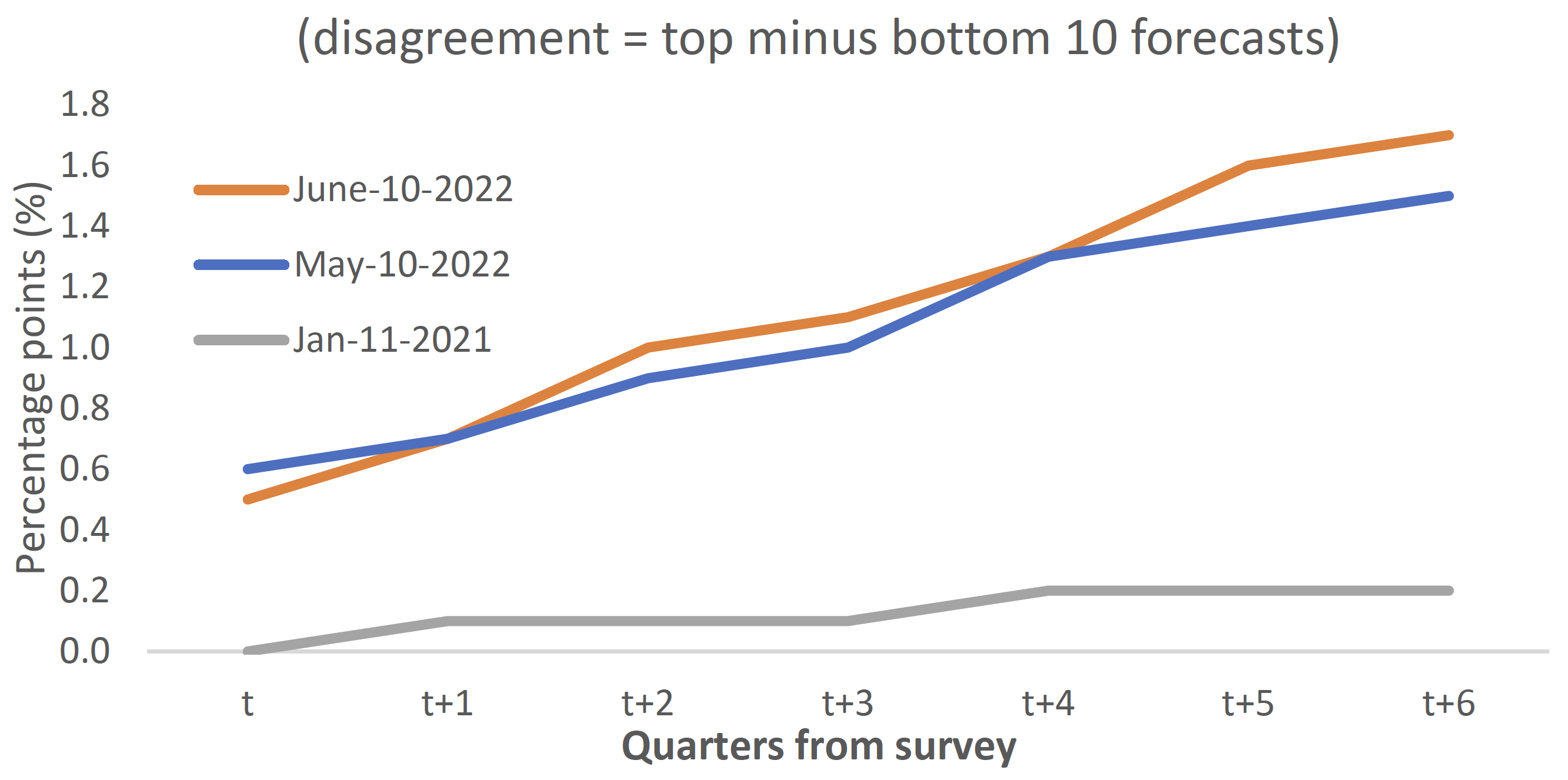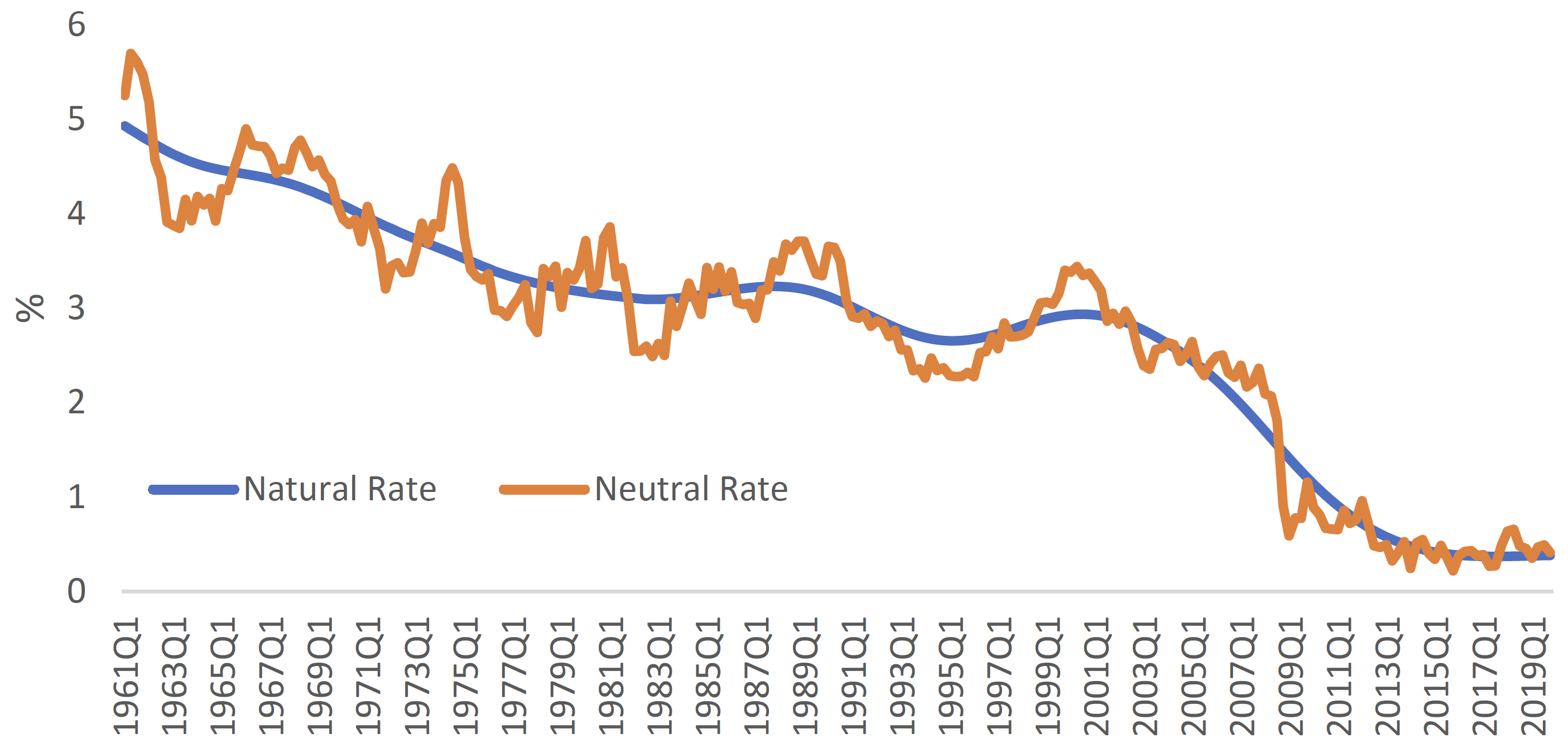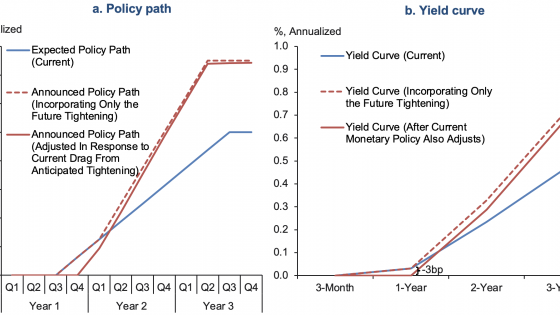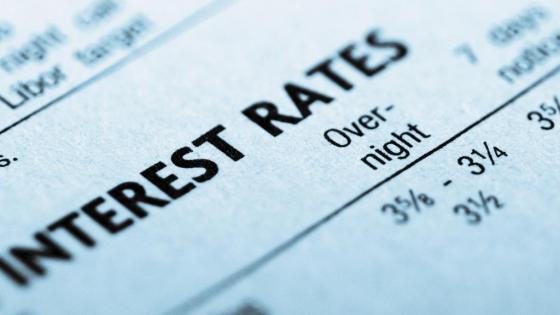Disagreement about how much monetary policy will need to be tightened is high at the moment. We illustrate this using financial forecasts by the private sector collected in the monthly BlueChip survey. Figure 1 plots the difference between the average of the ten highest forecasts minus the average of the ten lowest forecasts for the three-month US T-Bill rate, an interest rate very closely linked to the federal fund rates. For the fourth quarter of 2023, the spread between highest and lowest forecasts was 1.5% and 1.7% in the May and June surveys, respectively, which is large compared to early 2021.
Figure 1 Disagreement on future short-term interest rates
Notes: Data are from the BlueChip Financial Survey (via Haver)
Going further back in history, the size of current disagreement is roughly in line with the long-run average, which the literature on forecast disagreement considers puzzlingly high. In Andrade et al. (2014), the authors document that, on average since 1980, disagreement about the future Fed funds rate is increasing with the forecast horizon and peaks at around 2% for the 6 to 11-year horizon (see also Andrade et al. 2016). In a recent Vox column, Martinez-Garcia and Doehr (2022) argue that disagreement is a sign of policy uncertainty and explain how it complicates central banks’ expectation management efforts.
Components of nominal monetary policy rates
To better understand the sources of disagreement, we decompose the nominal short-term interest rate into its components:
All three components are, in our view, important to explain ongoing disagreement. This column is a first step, in which we differentiate the three components and focus on clarifying the real neutral rate component.
The so-called real neutral rate of interest is the level of real interest rate consistent with stable inflation and output at potential.1 If the real monetary policy rate is below the neutral level, the monetary policy stance is expansionary. If it is above, monetary policy is contractionary, putting downward pressure on aggregate demand and consequently on inflation and the output gap. With inflation running currently above target and short-term interest rates still low, economists argue that central banks need to raise interest rates at least to the level of the neutral rate.
Our main point in this column is that the real neutral rate has a slow-moving, long-run component as well as a short-run component, and that lack of clarity about this distinction might currently explain a considerable part of disagreement.
Neutral versus natural rate of interest
In the current debate, it is often unclear whether discussants talk about the neutral rate (‘short-run R*’) or the natural rate (‘long-run R*’ or ‘long-run neutral rate’). The terms are often used interchangeably but, though closely related, the two underlying concepts originate from different types of economic models and the distinction is important at the current juncture.
The natural rate of interest, or long-run R*, originates from the literature on economic growth. We define it as the riskless return that equates the demand and supply of savings in the long-run equilibrium, absent any shocks. Models in this literature link the natural rate to slow-moving variables, like demographic characteristics of the population (e.g. fertility rate, life expectancy), income inequality, and productivity growth (Platzer and Peruffo 2022). As stated in the definition, the natural rate of interest is itself slow-moving and is not impacted by temporary shocks.
In contrast, the neutral rate, or short-run R*, originates from New Keynesian DSGE models and mimics the real interest rate that would prevail in an economy without nominal rigidities. Central banks use such hypothetical interest rate as benchmark to eliminate inefficiencies caused by the nominal rigidities. Some economic shocks can move this benchmark around temporarily. That’s why the neutral rate can exhibit significant short-run movements.
It is helpful to think about the neutral rate as fluctuating around the natural rate in a stationary manner.2 Figure 2 illustrates this by plotting the neutral rate estimate from the Laubach-Williams model along its long-run trend. While small in recent years, the difference between the neutral rate and its long-run trend (measuring the natural rate) was sizeable during several episodes.
Figure 2 Natural versus neutral rate of interest
Notes: The Neutral Rate is an updated estimate of the Holston-Laubach-Williams model downloaded from the NY Fed website. The Natural Rate is the long-run Trend component of the Neutral Rate, extracted with the HP Filter.
What kind of factors can drive a wedge between the natural and neutral rate of interest? In the workhorse model by Smets and Wouters (2003, 2007), some transitory shocks – for example, to productivity or government spending – can temporarily drive the neutral rate away from its long-run value (the natural rate of interest).
In the current debate, a popular argument maintains that many determinants of interest rates, like demographics and productivity, have not changed much since the pandemic and are also unlikely to reverse course soon. Consequently, the argument goes, the level of R* should not have changed from its pre-pandemic level of around 0.35% (based on the widely cited Laubach-Williams and Holston-Laubach-Williams models). This type of argument misses the point that there are other determinants than the slow-moving ones, which might very well have changed since the pandemic. For example, there has been massive US fiscal stimulus (e.g. the spring 2021 US $1.9 trillion American Rescue Plan). In a range of New Keynesian models, unanticipated and transitory increases in government spending are predicted to lift the neutral rate temporarily. In the current context, this would imply that the neutral rate is above the natural rate of interest. While this gap should be expected to close over time, at the current juncture, it would be the higher neutral rate that is the appropriate target level for monetary policy, not just the steady natural rate component.
Inflation expectations and monetary stance
Since monetary policy sets nominal interest rates, economists need to combine their view on the real neutral rate with a measure of inflation expectations. The latter is another important source of disagreement because, in practice, it is difficult to measure inflation expectations appropriately. For example, some economists use their expectations about realised inflation in 2023, while others may estimate where short-run inflation expectations will be in 2023, and yet another group may simply use the Fed’s inflation target. More generally, uncertainty about the future path of inflation is very high in the current high-inflation environment. We leave the topic of appropriate inflation expectation measurement for a future commentary.
Finally, the expected monetary stance, that is the nominal rate minus the sum of real neutral rate and expected inflation, captures how much the nominal policy rate is expected to deviate from neutral. This will depend on a range of factors including the deviation of inflation and economic activity from target levels as well as the trade-off between and preferences over different central bank objectives. For example, consider a temporary cost-push shock that leads to above target inflation. In standard macroeconomic models, this kind of shock leaves the neutral real rate unchanged. In such a situation, the central bank faces a choice between increasing the real rate to fight inflation at the cost of driving output below potential or holding interest rates steady and tolerating higher inflation. Economists’ expectations about the monetary stance are difficult to quantify because there is neither a single underlying concept, nor is the monetary stance the subject of survey questionnaires. Discussions in media suggest that economists’ views on the future monetary stance range from ‘neutral’ to ‘considerably above neutral’.
Conclusion
An accurate prediction of future short-term policy rates requires analysing all underlying components. In this column, we argue that the current debate is unclear with respect to measurement of the real neutral rate, which can explain part of the disagreement about short-term policy rates. By clarifying the concepts of natural and neutral interest rates, we hope to contribute towards streamlining the discussion and reducing disagreement.
Authors’ note: The views expressed herein are those of the authors and should not be attributed to the IMF, its Executive Board, or its management.
References
Andrade, P, R Crump, S Eusepi and E Moench (2014), “Learning from disagreement: Evidence from forecasters”, VoxEU.org, 23 December.
Andrade, P, R K Crump, S Eusepi and E Moench (2016), “Fundamental disagreement”, Journal of Monetary Economics 83: 106-128.
Holston, K, T Laubach and J C Williams (2017), "Measuring the natural rate of interest: International trends and determinants", Journal of International Economics 108: S59-S75.
Laubach, T and J C Williams (2003), "Measuring the natural rate of interest", Review of Economics and Statistics 85(4): 1063-1070.
Martínez-García, E and R Doehr (2022), “Interest rate expectations shape the Federal Reserve’s path of lift-off”, VoxEU.org, 6 March.
Platzer, J and M Peruffo (2022), “Secular Drivers of the Natural Rate of Interest in the United States. A Quantitative Evaluation”, IMF Working Paper No. 2022/030.
Smets, F and R Wouters (2003), "An estimated dynamic stochastic general equilibrium model of the euro area", Journal of the European Economic Association 1(5): 1123-1175.
Smets, F and R Wouters (2007), "Shocks and frictions in US business cycles: A Bayesian DSGE approach", American Economic Review 97(3): 586-606.
Endnotes
1 The real neutral level of interest is unobservable and can be estimated only with high uncertainty.
2 DSGE models are usually solved and analysed in terms of deviations from the steady state. The steady state is the solution to the model in absence of any transitory shocks. With some simplifications, it corresponds closely to the solution of a very simple growth model. This motivates our suggestion to think about the neutral rate fluctuating around the natural rate.
3 Andrade et al. (2016) explain high disagreement about nominal policy rates in the long run with disagreement about long-run inflation and output. This is consistent with both our points about the real neutral rate as well as about inflation expectations.
